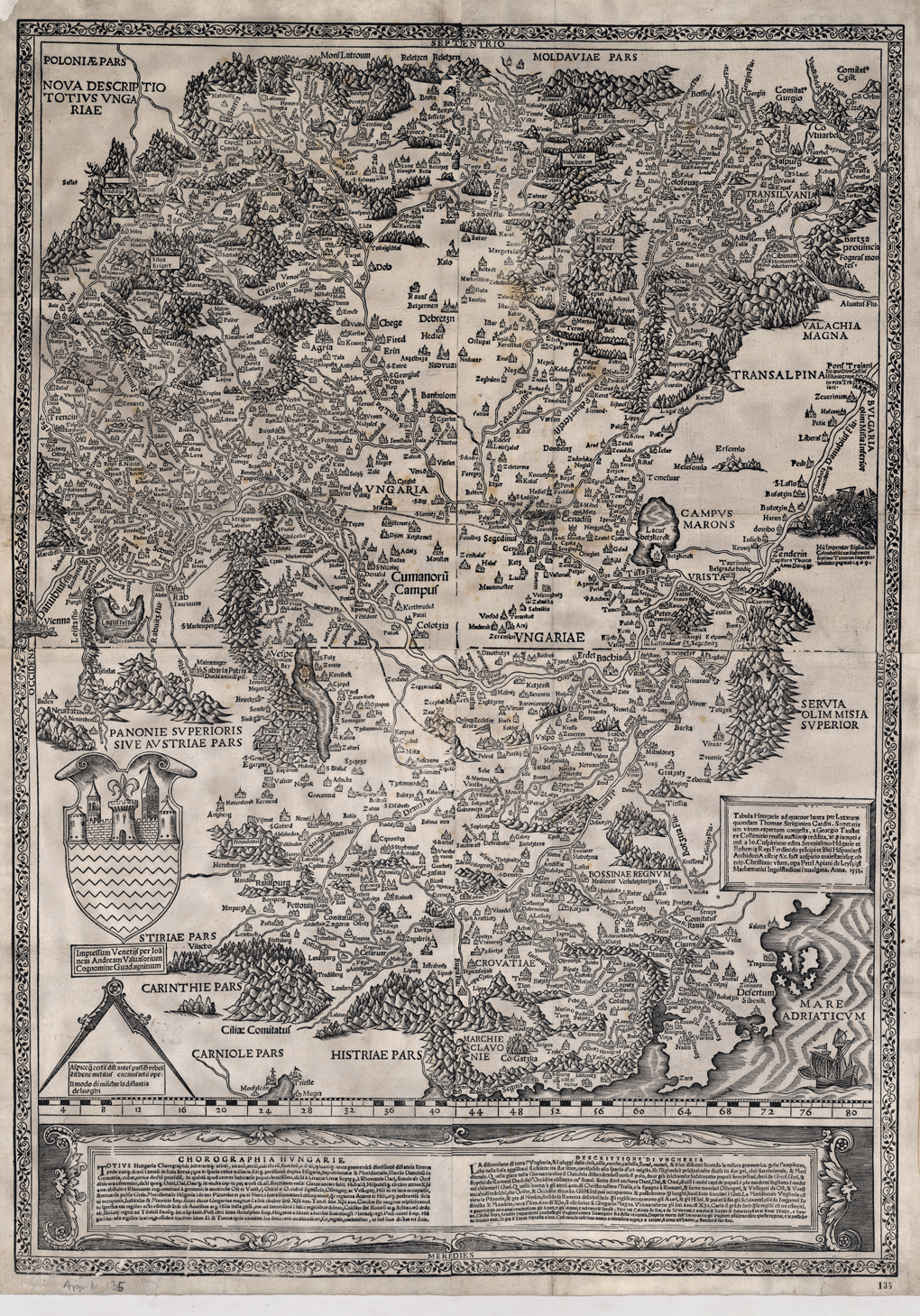
After the original release of the Tabula Hungariae, it was copied several times all over Europe.
Venice, Giovanni Andrea Valvassore, 1553. The early Venetian masters, Valvassore and Matteo Pagano were not only connected to trade, but they were also carvers. The symbol of Valvassore’s workshop appears on several maps, including his edition of the Tabula Hungariae, in place of the crest of Ferdinand I. He has made a few small changes in the title, and in the upper left corner, has placed a new title, Nova description totius Ungariae. This work was entirely carved in wood, and was copied using four blocks. Valvassore changed the spelling of the names to fit his own language. Deduced from the names shown, he didn’t use the copy that survived. He added certain areas to the original, mostly on the shore of the Adrian Sea. Similarly to the Tabula Hungariae, descriptions can be found, in Latin and in Italian. Only two known copies exist, one is kept in the Bibliotheque de la Sorbonne, the other is in the National Széchényi Library, as a gift from Count Sándor Apponyi.






